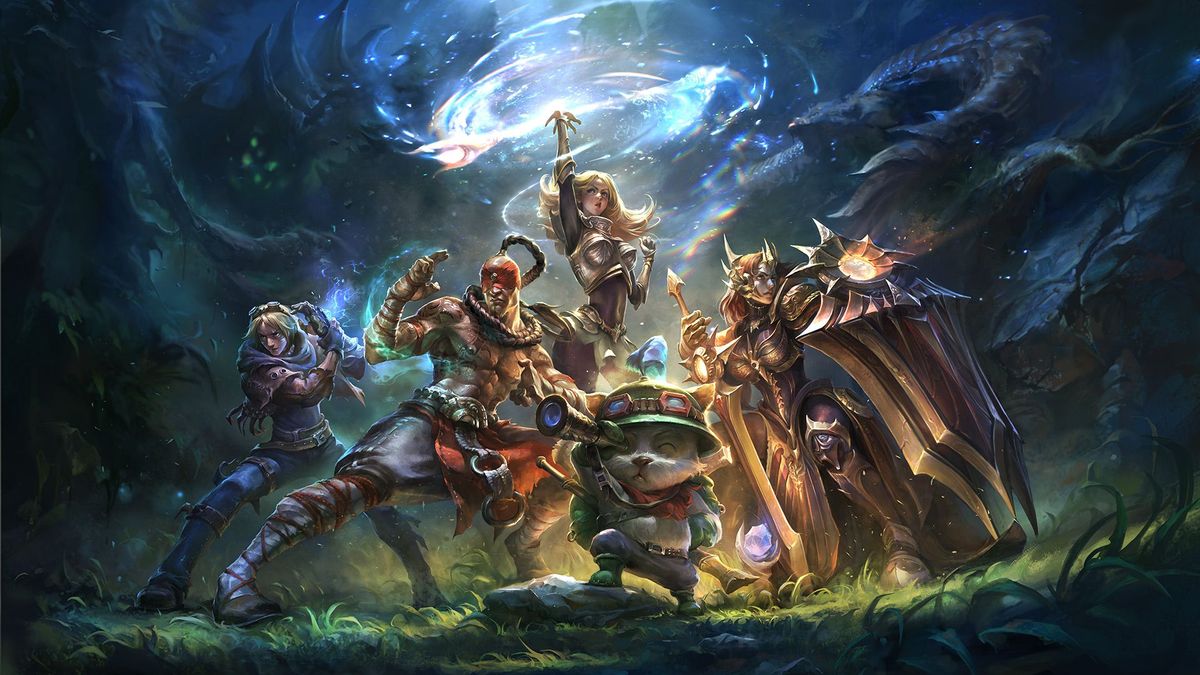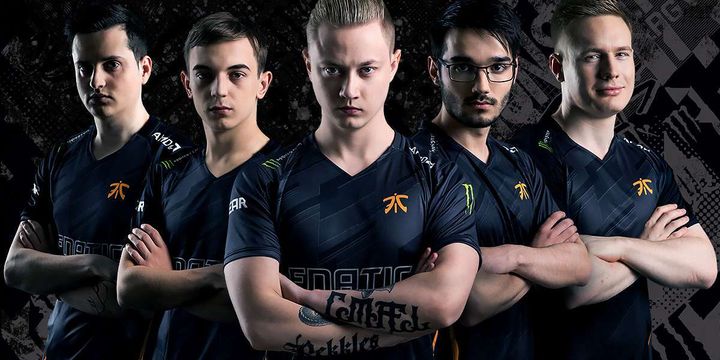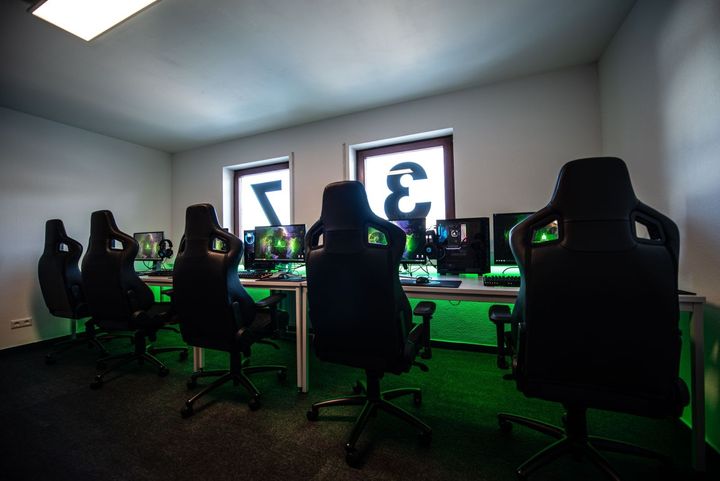A Brief History of League of Legends
Publishers balked at this formula, with there being no guaranteed money and also, no single-player mode, which was a more widely required piece of a game in the aughts.

League of Legends currently sits near the top of the heap of the most played games. It’s fighting with other titans of the industry, games like Minecraft, Call of Duty, and Counter-Strike, which have been pillars of the community for years if not decades. Both Call of Duty and Counter-Strike were introduced in the early 2000s, while League was later to the party, releasing in 2009. Despite giving up a head-start, League has quickly become a worldwide phenomenon, and while it doesn’t quite resonate with the casual player as much as a Call of Duty or Minecraft game might, its competitive scale and diversity of lore and characters created an environment where millions of players are active at any given time. We’re taking a look back at the creation of League, how it’s grown, and how the MOBA genre, in general, has become one of the biggest genres in eSports and gaming.
MOBAs, or Multiplayer Online Battle Arena
Traditionally, a MOBA follows a very distinct formula. Two teams, comprised of (typically) 5 players, meeting along three roads, or lanes. League is no exception but has unique factors that make it unique. While the set-up may seem simple, the diverse cast of playable characters, each with their own abilities, keeps each game fresh and exciting. Some champions are ranged, some are brutish bruisers with plenty of health, and some hold special abilities that pair well with other players. The vastness of characters and abilities, and how they play off of all other characters keeps the game from getting too formulaic, and the designs and characterization are nothing to sneeze at.
Additionally, the map, while simple, has some factors at play to keep the game fresh. While each player has a general idea of where everything is, you are only able to see what is going on in real-time in certain areas. There is a radius around each friendly player and yourself, as well as the territories you control, where you are able to see enemies. Otherwise, they lurk in the dark, secretly waiting for you to stretch too thin and jump behind you to attack and funnel you toward reinforcements.
The final everchanging factor that keeps the game exciting is the in-game shop system. Each player accrues money as the game goes on, either from killing enemies or just passively surviving. This gold can be spent on power-ups, building up the variety of stats that a player holds. This additional customization on top of the unique characters ensures that you can play the same champion twice, but build them in completely different ways. Of course, there are widely agreed-upon best practices, but a player can play however they want, either funneling their cash into attack-based stats, building up their health, or ensuring they can use plenty of abilities by boosting their mana.
With all this in place, League keeps things interesting again and again, and even the most seasoned players will keep playing as new champions are released, or old ones revisited. Other MOBAs have cropped up over the years, the most prominent running mate to League is DOTA 2, but games like Smite or Heroes of the Storm innovate in new ways outside of the formula.
The Beginning’s of League
LoL’s developer, Riot Games, was created with the sole intent of revolutionizing competitive online gaming. The two primary founders, Brandon Beck and Marc Merill saw the success of fellow MOBA ‘DOTA’ and sought to create their own version. With a few twists and tweaks, they thought that the genre had more to offer, and they spent years carefully crafting what they thought would be the next big thing in gaming. The game premiered on the Warcraft III engine and had a very curious feature. Beck and Merill insisted on a then-revolutionary “Free-To-Play” structure. They were certain that by building an e-commerce structure into the game, they would hook players first, and then profit off of them later. Players can buy a variety of items in the game, from playable characters to new skins for existing characters that are purely aesthetic. The two were banking (no pun intended) on players loving the game, its lore, and its characters enough to keep coming back, and not just taking advantage of the free options.
Publishers balked at this formula, with there being no guaranteed money and also, no single-player mode, which was a more widely required piece of a game in the aughts. Despite this, League moved forward with its launch and released the game in its initial entirety in late 2009.
The game was met with favorable reviews upon initial release, with critics citing the replayability and diversity of the game as its strongest asset. Compared to DOTA, the game provided much more customization and leaned into different play styles like no MOBA before. The free-to-play structure was reviewed positively, and though League reported that only 4% of its players purchased cosmetic upgrades, the large player base allowed for the game to still be widely profitable. The game continues to be patched to this day, altering power levels, adding new champions and clothing options, and correcting bugs regularly. It not only set a genre standard, but an industry standard, with other free-to-play online games following in its wake, the likes of Fortnite and Apex Legends come to mind.
eSports
eSports are obviously a huge part of the LoL following. League is an industry leader in modernizing and professionalizing their product, with national/continental leagues across the world, and formal World Championships regularly. With the overwhelming player base comes a great source of viewership, and both the competitive and casual cultures have operated alongside each other incredibly well, with eSports surpassing some of the most long-standing professional leagues in terms of viewership. Online viewership and in-person attendance for the game's esports events outperformed those of the National Basketball Association, the World Series, and the Stanley Cup in 2016. Safe to competitive gaming is taking a top spot in the professional sports culture for the foreseeable future.
Riot still manages the majority of League’s function to this day, which includes the professional circuit. They operate 13 leagues internationally, with 109 teams and 545 players. The company sells streaming rights and has partnered with ESPN in the North American market. Players have boasted salaries north of $1 million, and will likely see the numbers continue to rise as the game continues to grow.
Riot Games started in a converted warehouse underneath an overpass in California and rode their ideas to the top of gaming’s elite. While Minecraft may boast a larger player base, LoL’s competitive nature gives it another avenue for revenue, and it’s built its empire to span the entire globe. While the culture of the game’s player base is widely regarded as demonstrative, the game continues to grow, and there are some companies (hint, hint) that are looking to tackle the toxicity epidemic happening within the game’s environment. Riot has also taken steps to assist in cleaning up the culture with additional features, including the internal Honor system, but there’s work to be done to continue to improve.
Happy gaming,
The Street Cred Team



